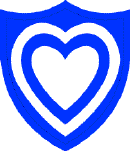
The 101st Airborne Division is a light infantry division of the United States Army specializing in air assault operations. The Screaming Eagles were referred to as "the tip of the spear" by former U.S. Secretary of Defense Robert Gates and the most potent and tactically mobile of the U.S. Army's divisions by former Chief of Staff of the Army GEN Edward C. Meyer (ret). The 101st Airborne is able to plan, coordinate, and execute brigade-size air assault operations capable of seizing key terrain in support of operational objectives and is capable of working in austere environments with limited or degraded infrastructure. These operations can be conducted by mobile teams covering large distances and engaging enemy forces behind enemy lines. According to the author of Screaming Eagles: 101st Airborne Division, its unique battlefield mobility and high level of training have kept it in the vanguard of US land combat forces in recent conflicts. More recently, the 101st Airborne has been performing foreign internal defense and counterterrorism operations within Iraq and Afghanistan.

The XVIII Airborne Corps is a corps of the United States Army that has been in existence since 1942 and saw extensive service during World War II. The corps is designed for rapid deployment anywhere in the world and is referred to as "America's Contingency Corps". Its headquarters are at Fort Bragg, North Carolina.

U.S. Military Assistance Command, Vietnam (MACV) was a joint-service command of the United States Department of Defense.

A long-range reconnaissance patrol, or LRRP, is a small, well-armed reconnaissance team that patrols deep in enemy-held territory.
The Rapid Deployment Joint Task Force (RDJTF) is an inactive United States Department of Defense Joint Task Force. It was first envisioned as a three-division force in 1979 as the Rapid Deployment Force, or RDF, a highly mobile force that could be rapidly moved to locations outside the normal overseas deployments in Europe and Korea. Its charter was expanded and greatly strengthened in 1980 as the RDJTF. It was inactivated in 1983, and re-organized as the United States Central Command (USCENTCOM).

United States Army Forces Command (FORSCOM) is the largest United States Army command. It provides expeditionary, regionally engaged, campaign-capable land forces to combatant commanders. Headquartered at Fort Bragg, North Carolina, FORSCOM consists of more than 750,000 active Army, U.S. Army Reserve, and Army National Guard soldiers. FORSCOM was created on 1 July 1973 from the former Continental Army Command.

United States Army Reconnaissance and Surveillance Leaders Course (RSLC) is a 29-day school designed on mastering reconnaissance fundamentals of officers and non-commissioned officers eligible for assignments to those units whose primary mission is to conduct reconnaissance and surveillance, target acquisition, and combat assessment operations. RSLC is taught by the 4th Ranger Training Battalion, Airborne and Ranger Training Brigade. The school is open to Soldiers, Marines, Sailors and Airmen to train them to expert levels in reconnaissance, surveillance, target acquisition, battle damage assessment, communications, planning, foreign vehicle identification, and other skills. The school was originally created to serve leaders from Long Range Surveillance Units (LRSU's), but now provides the specific reconnaissance training needed to ensure the effectiveness of small unit reconnaissance elements for the U.S. Army and joint force. Given the training focus and difficulty of the RSLC, the school is still commonly attended by operators from U.S. Army Special Forces, the 75th Ranger Regiment's Regimental Reconnaissance Company, Navy SEALs, and Marine reconnaissance units; today's students also come from more conventional infantry, Stryker and armored Brigade Combat Teams (BCT). Following the US Army decision to disband US Army LRS companies, the reconnaissance fundamentals taught in the course also provides U.S. military commanders the ability to preserve key LRS skills and abilities within the conventional force.

I Field Force, Vietnam was a corps-level command of the United States Army during the Vietnam War. Activated on 15 March 1966, it was the successor to Task Force Alpha, a provisional corps command created 1 August 1965 for temporary control of activities of U.S. Army ground combat units arriving in Vietnam. I Field Force was a component of U.S. Military Assistance Command Vietnam (MACV) and had its headquarters at Nha Trang.

XXIV Corps was a U.S. Army Corps-level command during World War II and the Vietnam War.

Henry Everett "Hank" Emerson was a United States Army lieutenant general best known for being the commander of the 2nd Infantry Division in South Korea during the mid-1970s, when Colin Powell served as a battalion commander. Emerson was a 1947 graduate of the United States Military Academy.

Melvin Zais was a United States Army general who served in the Second World War and Vietnam War.

General William F. "Buck" Kernan was born in Fort Sam Houston, Texas. He was commissioned in November 1968 from Officer Candidate School at Fort Benning, Georgia. He holds a Bachelor of Arts degree in history from Our Lady of the Lake University and a Master of Arts degree in personnel administration from Central Michigan University. His military education includes the Infantry Advanced Course, the U.S. Army Command and General Staff College, and the U.S. Army War College.

David Anthony Bramlett is a retired United States Army four-star general who commanded United States Army Forces Command from July 1, 1996 to August 31, 1998, after serving as Deputy Commander in Chief and Chief of Staff, United States Pacific Command at Camp H. M. Smith, Hawaii. During his tenure as Deputy Commander, he was the interim commander of Pacific Command after the commander, Admiral Richard C. Macke, came under fire for comments he had made in regard to the 1995 rape scandal in Okinawa that involved several U.S. servicemen.

George Samuel Blanchard was a United States Army four-star general who served as Commander in Chief, U.S. Army Europe/Commander, Central Army Group (CINCUSAREUR/COMCENTAG) from 1975 to 1979.

Benjamin L. Harrison is a former United States Army officer who contributed to the tactics of modern airmobile warfare involving the integration of helicopters with infantry and armor forces for both rapid deployment and subsequent support. General Harrison was an early advocate, theorist and practitioner of these tactics, commonly referred to as "air assault." They are analogous to the revolutionary use of armor and air support with infantry in blitzkrieg warfare in early World War II, and are critical to modern military doctrine as practiced in Vietnam Iraq and Afghanistan.

Julian Johnson Ewell was a career United States Army officer who served in World War II, the Korean War and the Vietnam War. He commanded the 9th Infantry Division and II Field Force in Vietnam, and attained the rank of lieutenant general.

John Hancock Hay Jr. was a lieutenant general in the United States Army who served as commander of the Berlin Brigade, the 1st Infantry Division during the Vietnam War and XVIII Airborne Corps.

Salve H. Matheson was a general officer in the United States Army who served in World War II, the Korean War, and the Vietnam War.

Leo Henry Schweiter was a United States Army Major General who served as commander of the 173rd Airborne Brigade during the Vietnam War.
Operation Nevada Eagle was a security operation during the Vietnam War in Thừa Thiên Province, that took place from 17 May 1968 to 28 February 1969.


















